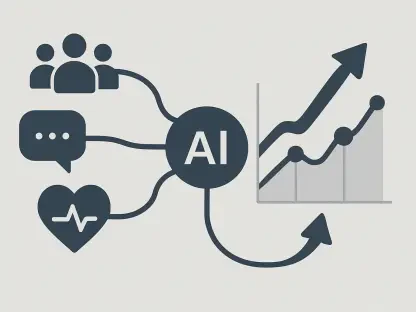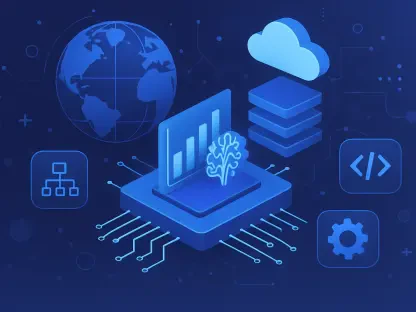The connected enterprise market is experiencing rapid growth, driven by technological advancements, widespread IoT integration, and the increasing necessity for real-time data analytics. As the market is projected to surpass USD 3.5 trillion by 2032, this article explores the key elements fueling this surge, identifies the major players leading the charge, and discusses the overarching trends that are redefining the future of connected enterprises.
Growing Demand for Interconnected Technologies
The escalating demand for interconnected technologies is a pivotal factor propelling the expansion of the connected enterprise market. Across various sectors, organizations are adopting these technologies to enhance productivity and ensure smooth collaboration. This trend has been further amplified by the rise of remote and hybrid work models, making robust digital communication tools indispensable.
Interconnected technologies empower businesses to maintain seamless communication channels, irrespective of physical location, facilitating effective teamwork and coordination. This is particularly critical for large enterprises that need synchronized operations across multiple locations. The integration of IoT devices within enterprise systems takes connectivity to the next level, providing real-time data and insights essential for decision-making.
The proliferation of remote work has highlighted the need for adaptable and reliable communication solutions. As of March 2024, 12% of the workforce operates fully remotely, and 26% are in hybrid setups, underscoring the importance of technologies that enable remote collaboration. As a result, companies are investing heavily in digital tools that allow employees to communicate and collaborate effortlessly, ensuring business continuity and operational efficiency.
Real-Time Data Analytics: The Heart of Modern Businesses
Real-time data analytics has become a cornerstone for modern businesses striving for agility and competitiveness. The capability to analyze massive volumes of data as it is generated empowers companies to make swift, informed decisions. This functionality is crucial in sectors like finance, healthcare, and manufacturing, where timely insights can significantly influence outcomes.
Investment in advanced analytics tools is surging as companies seek to harness the power of real-time data. This is not merely about gaining a competitive edge but about staying viable in a fast-paced, data-driven environment. The business analytics segment is poised for rapid growth as organizations increasingly rely on sophisticated tools to understand market trends, consumer behavior, and operational metrics.
Real-time analytics enable businesses to respond to changes dynamically, optimize processes, and predict future trends with greater accuracy. In the manufacturing sector, for instance, real-time data helps monitor production lines, detect anomalies, and implement corrective measures instantly, reducing downtime and enhancing productivity. In healthcare, real-time analytics can significantly improve patient outcomes by providing immediate insights into patient conditions and enabling prompt medical interventions.
Major Industry Players and Their Strategic Maneuvers
Leading industry players such as Cisco Systems, Siemens, IBM, Microsoft, Amazon Web Services (AWS), Schneider Electric, Honeywell, General Electric (GE), and Bosch are at the forefront of the connected enterprise market. These companies are employing various strategies to maintain their competitive edge and drive market growth.
Product diversification is a common approach among these industry giants. They are continually expanding their offerings to meet the evolving needs of their customers by developing new IoT devices, software solutions, and services tailored to specific industries. Strategic partnerships and alliances are also prevalent, enhancing value propositions and opening new market avenues. For instance, collaborations enable companies to combine their strengths, integrate technologies, and deliver more comprehensive solutions to their customers.
Significant investments in R&D underscore these companies’ commitment to innovation and market expansion. By investing in research and development, they are able to introduce cutting-edge technologies and stay ahead of the competition. Strategic acquisitions and mergers further illustrate their aggressive market maneuvers, allowing them to expand their market reach, acquire new technologies, or consolidate market share.
One notable example of strategic collaboration is the partnership between Cisco and General Motors initiated in April 2022. This collaboration aims to modernize and automate vehicle development data processes, leveraging Cisco’s industrial wireless networking technology. The goal is to improve performance testing and reduce time-to-market for commercial vehicles. By utilizing advanced networking solutions, GM engineers can swiftly analyze crucial vehicle data, enabling quicker, data-driven decision-making that enhances vehicle development and competitiveness.
The Role of IoT in Enterprise Connectivity
The integration of IoT within enterprise systems is revolutionizing various industries. IoT devices facilitate real-time monitoring, control, and data collection, thereby enabling more efficient and streamlined operations. This transformation is particularly impactful in sectors such as manufacturing, logistics, and healthcare.
In manufacturing, IoT devices play a critical role in predictive maintenance. By constantly monitoring the condition of machinery and equipment, they can predict potential failures before they occur, minimizing downtime and maximizing productivity. In logistics, connected devices are used to track shipments, optimize routes, and ensure timely delivery, thus improving supply chain efficiency. The use of IoT in healthcare is another game-changer, enabling remote patient monitoring and offering healthcare providers real-time data to make informed decisions, ultimately enhancing patient care and reducing hospital readmissions.
IoT’s contribution to enterprise connectivity extends beyond operational efficiencies to include improved safety, reduced costs, and enhanced customer experiences. By collecting and analyzing data from multiple touchpoints, businesses can uncover trends, address inefficiencies, and deliver more personalized services. For example, in smart building management, IoT sensors monitor environmental conditions such as temperature, humidity, and occupancy, allowing facility managers to optimize energy usage, maintain comfort, and improve overall building performance.
Retail: A Beacon of Connected Technology Adoption
The retail sector exemplifies how connected technologies can enhance customer experiences and drive market growth. Retailers are increasingly adopting technologies such as smart shelves, interactive displays, RFID technology, and mobile payment systems to optimize operations and improve customer engagement.
Connected technologies in retail enable personalized shopping experiences, improved inventory management, and streamlined supply chains. Smart shelves, equipped with sensors, track inventory levels in real-time, reducing stockouts and ensuring that popular items are always available. Interactive displays enhance customer engagement by providing product information, recommendations, and promotions, thereby creating a more immersive shopping experience.
RFID technology is revolutionizing inventory management by providing accurate, real-time data on product locations and stock levels. This enables retailers to manage their inventory more effectively, reduce shrinkage, and ensure timely replenishment. Mobile payment systems offer convenience to customers, reducing wait times at checkout and improving the overall shopping experience. By leveraging real-time data analytics, retailers gain deep insights into customer preferences, allowing them to predict trends, tailor their offerings, and increase customer satisfaction and loyalty.
Asia Pacific: A High-Growth Region
The Asia Pacific region is emerging as a high-growth area in the connected enterprise market. This growth is driven by rapid urbanization, significant investments in technology infrastructure, and a large population of tech-savvy consumers. Countries such as China, India, and Japan are at the forefront, with substantial investments in IoT infrastructure and smart city initiatives.
Smart city projects across the region are incorporating IoT technologies to improve urban living standards, enhance public services, and drive economic growth. For example, in China, cities like Shanghai and Shenzhen are implementing smart traffic management systems that use IoT sensors to monitor traffic flow, reduce congestion, and improve road safety. In India, the Smart Cities Mission is deploying IoT-enabled solutions for efficient water management, waste management, and energy usage.
The increasing penetration of smartphones and better internet connectivity further supports the proliferation of connected devices and services in the Asia Pacific region. This technological advancement opens up new opportunities for businesses to innovate and expand their market reach. For instance, improved connectivity allows for the widespread adoption of mobile commerce, enabling consumers to shop online conveniently and securely. Additionally, the region’s large and youthful population is highly receptive to new technologies, making it an attractive market for innovative connected enterprise solutions.
Conclusion
The connected enterprise market is on a fast track, largely due to leaps in technology, the broad adoption of IoT, and an increasing need for real-time data analytics. Projections indicate that the market will surpass USD 3.5 trillion by 2032. This upsurge is being supported by several key factors, including the integration of IoT devices across various industries, which allows for more efficient and effective operations. Real-time data analytics are becoming essential for businesses aiming to react quickly to market changes and make informed decisions.
Additionally, the rise of edge computing and advancements in machine learning are playing significant roles in this growth. Major tech companies are at the forefront, driving innovation and competition within the market. Companies such as IBM, Microsoft, and Cisco are leading the charge by providing cutting-edge solutions that enhance connectivity and data management.
Trends like the proliferation of 5G networks, the development of smart cities, and an increasing focus on cybersecurity are also shaping the future of connected enterprises. As businesses continue to embrace these technologies, the landscape of connected enterprises is being fundamentally redefined. With continual advancements in technology and ever-growing data needs, the market is set to flourish well into the next decade.









